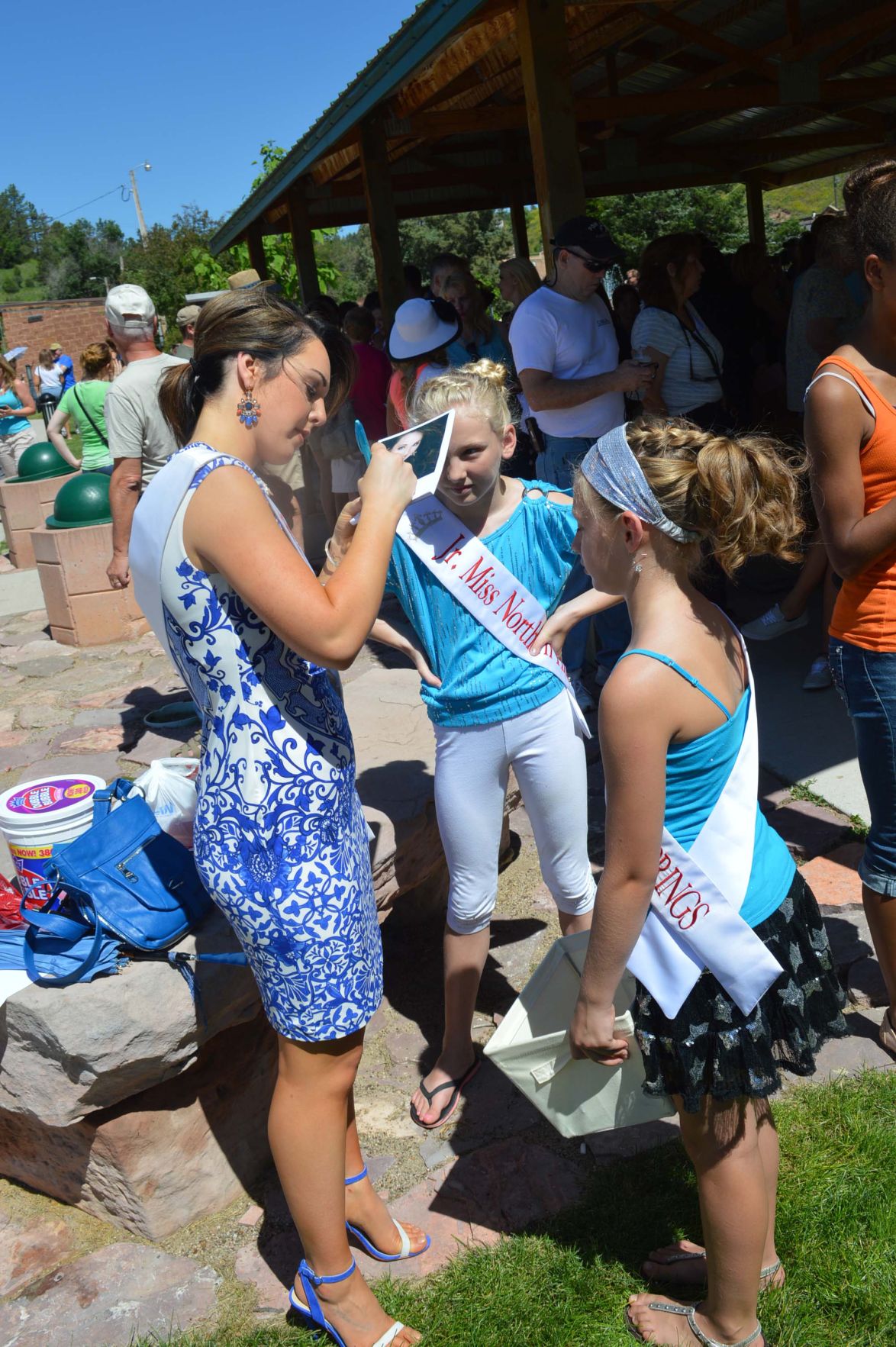The Miss South Dakota pageant: It’s not all about glamour
HOT SPRINGS -- Calling the Miss South Dakota pageant all about glamour and not about substance, would be a mistake, say the pageant’s Executive Director and two judging committee members.
About the pageant
According to the Miss South Dakota Scholarship Foundation website, the pageant system is about helping young women achieve their goals.
As part of the Miss America organization, one of the nation’s leading achievement programs, and “the world’s largest provider of scholarship assistance for young women,” the focus is on helping young women achieve their goals.
To become Miss South Dakota and compete for the Miss America crown, a contestant must first win a local competition.
The process of competing in a local pageant, says the website, is rewarding because it requires personal commitment, hard work and talent. More than 12,000 young women participate in state and local events annually, supported by the tens of thousands of volunteers who organize these competitions, promote community involvement and further scholarship and achievement among the young women who compete.
Contestants must be a U.S. citizen between age 17 and 24, and meet residency and character criteria requirements for their area, be in reasonably good health to meet the job requirements and commit to the time commitment and job responsibilities set forth by local programs.
It’s not all glamour
Miss South Dakota Scholarship Program Executive Director September Kirby says its not all about glamour because of the judging system.
“The Miss America Organization is based off of the four points of the crown: style, scholarship, service and success,” she says. “Although 35 percent comes from lifestyle and fitness in swimwear and evening wear where some may think it is a ‘beauty pageant,’ the contestants are judged on much more than their “look”. They are also judged on confidence, posture and stage presence which can all be identified as lifelong skills.
“The judges are looking for a young woman that represents all four points of the crown,”Kirby continued, “someone who not only has appropriate style, but serves her community and platform issue, is seeking educational opportunities and is striving for overall success in all areas of her life, not just the pageant world.
Ashley Lauing, of Hot Springs, a Miss South Dakota pageant committee member, agrees.
Lauing awards the contestants their checks after the judges’ decision. And she says she gets to see a lot of “behind the scenes” things that go on at the pageant.
“We require a lot from these girls,” Lauing said, “that they make public appearances, that they promote Miss South Dakota, and the things they’re passionate about. They must donate an immense amount of time for community service and show they are good role models. They educate people about many things – nutrition, domestic violence. People look up to them, and they serve as role models.”
“What are the judges really seeking?” Lauing continued, “I have no experience with judging, but I know that the scholarship committee selects judges and they have no communication with the board to keep them completely unbiased. The judges come from all walks of life, local celebrities, politics, former Miss SDs, etc. We work with the girls, judges and committees to pick young women who are good role models and can serve as a voice for South Dakota.”
Anita Frankenstein, of Hot Springs, does sit on the judges committee. And she also agrees with Kirby and Lauing.
“Miss America for years and years has emphasized scholarship,” she said. “The money won had to be used for scholarship, and only for scholarship – not for dresses, make-up and other things. The emphasis for years has been empowering women, giving them the tools they need to be relevant. We empathize intelligence.”
The high stress interview, for example, shows that the contestant can think on her feet, Frankenstein said. The stage questions, where judges throw questions at contestants out of the blue, asking about her likes or dislikes, topics like education, politics, hard news – and the judges are told that no question is off the table, but the questions must be appropriate – are designed to show how that contestants can validate their opinions by explaining why they believe the way they do, she said.
Frankenstein also talked about the community service platform – how contestants must do mandatory Childrens Miracle Network service, promote the pageant and share their private platforms – 2015 Miss South Dakota Autumn Simunek, for example, focused on veterans.
“Lifestyle elements of judging reflect the girl’s ability to look appropriate and show the girls can take care of themselves,” Frankenstein said. “It’s all about how you conduct yourself when you dress up, emphasize you as a relevant person.”
The interviews and stage questions, Frankenstein said, demonstrate how the girls project themselves.
“It’s one thing to talk one-on-one in a personal interview,” she said. “Another to go beyond the floodlights and have an audience understand you.”
“Talent is unique – other competitions don’t have this,” Frankenstein said. “It is No. 1 in points, and the idea is to show the girls are well-rounded, that they pursue other areas in life like the arts – singing, piano, dancing… we’ve had harpists, violinists even a unicycle rider. Anything they’ve pursued.”
“The Miss America Organization and South Dakota Scholarship Foundation is proud to provide competition opportunities for young women that promote diversity, individuality and overall achievement,” said Kirby, in conclusion.“They are not looking for a particular ‘mold,’ but rather a young woman who is articulate in expressing her interests and opinions, demonstrates a sense of confidence, maintains a healthy lifestyle and is talented in an area of her choice.”
http://rapidcityjournal.com/news/local/communities/hot-springs/the-miss-south-dakota-pageant-it-s-not-all-about/article_dcd83d90-318b-11e6-b624-afe059b27359.html


Nenhum comentário:
Postar um comentário